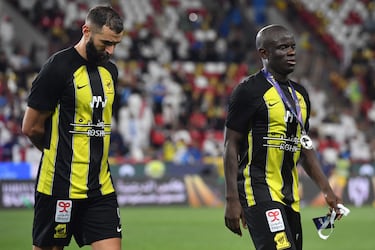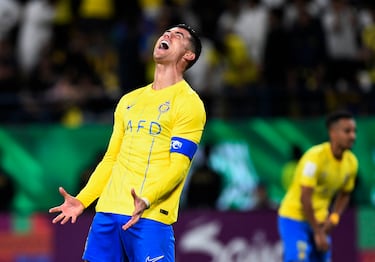Cristiano-influenced crisis in Saudi Arabia as ‘state’ teams cause imbalance
While PIF clubs are lavishing money on every player, the rest of the Roshn Saudi League is in an unprecedented crisis.

Outside the Public Investment Fund’s embrace, things get cold. While Al Nassr, Al Hilal, Al Ahli, Al Ittihad, and Al Ettifaq – the latter not part of the PIF (the sovereign wealth fund of Saudi Arabia) but supported by the league due to the club’s familial ties with the leadership – expand their squads with high-profile signings and young prospects, the rest of the Saudi teams are losing value.
Despite external financial backing, like Al Qadsiah with the oil giant Aramco, one of the largest companies globally in its sector, some clubs are facing a significant sporting crisis. While Al Ittihad concluded the transfer window with the signing of Moussa Diaby – bought from Aston Villa for around $60 million – its neighbour in Mecca, Al Wehda, barely has a squad of 14 players to start the league.
The two faces of the Saudi Pro League
Saudi Arabia’s plan to turn its league into one of the world’s major powers was always going to be a challenge, and it is already coming to terms with that. While some teams live in abundance, others are barely making ends meet, and some will even start the league with severe issues. The ease with which PIF-backed clubs can sign foreign talent is notably different from the rest. The reason is simple: while the bureaucracy of the Centre of Excellence for Football Acquisitions – the body responsible for green-lighting the purchase of major international names – poses no obstacles for the PIF, the response is different for the other clubs.

Last summer, Saudi Arabia looked to shake up the dominant European market. The Saudi leadership allocated over $1.5 billion to bring some of the best footballers on the international scene as an investment in the league’s development. In that spree, Cristiano Ronaldo, Aymeric Laporte, Sadio Mané, and Alex Telles joined Al Nassr; Neymar, Malcom, Rúben Neves, and Bono signed for Al Hilal; Karim Benzema, N’Golo Kanté, and Fabinho went to Al Ittihad; and Riyad Mahrez, Roberto Firmino, Gabri Veiga, and Franck Kessié moved to Al Ahli. Unlike similarly ambitious projects in China and the US, all of these stars could still have featured at top European clubs.
But it’s a different story for the rest.
Only Michel’s newly promoted Al Qadsiah has stood up to the summer of the ‘Big Five’. So far, they have signed two former LaLiga players, Pierre-Emerick Aubameyang and Nacho, along with Equi Fernández, a promising talent from Boca Juniors who is part of the Under-23 plan the league wants to implement. Aramco is preparing a new champion far from the PIF’s grasp – even though the fund itself owns the company.
Beyond that, there’s little life. Only Yannick Carrasco (Al Shabab) and Jason Denayer (Al Fateh) stand out among the clubs outside the country’s control. For many fans, the distribution of funds among clubs by the Professional League lacks professionalism and clear criteria.

Ronaldo’s Al Nassr in crisis
But even among those ‘Big Five’, not everything that glitters is gold. Within a giant like Al Nassr, problems continuously arise.
Related stories
Reports from Saudi Arabia suggest that Ronaldo’s team has been disadvantaged by the PIF’s favouritism towards Al Hilal. While institutions imposed Financial Fair Play restrictions on Al Nassr, Al Hilal spent over $200 million, and there were no obstacles in their strategic signings, unlike what happened with Al Nassr.
With this type of wrangling at the top, the financial woes of the rest, and a seemingly impossible challenge of increasing attendance and overall interest relative to the bigger leagues, questions remain about the long-term future of a league that believed money could buy it love.


Complete your personal details to comment